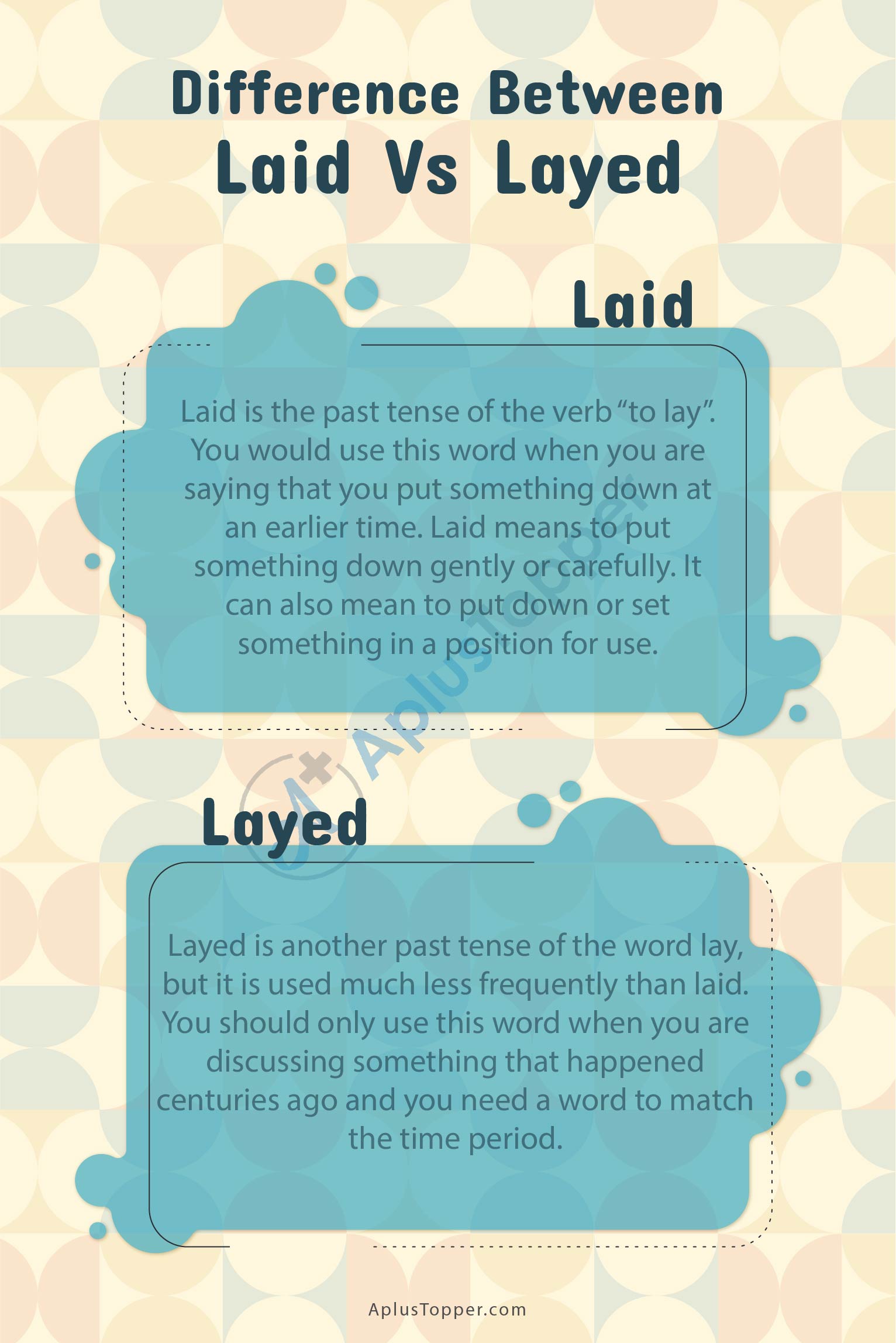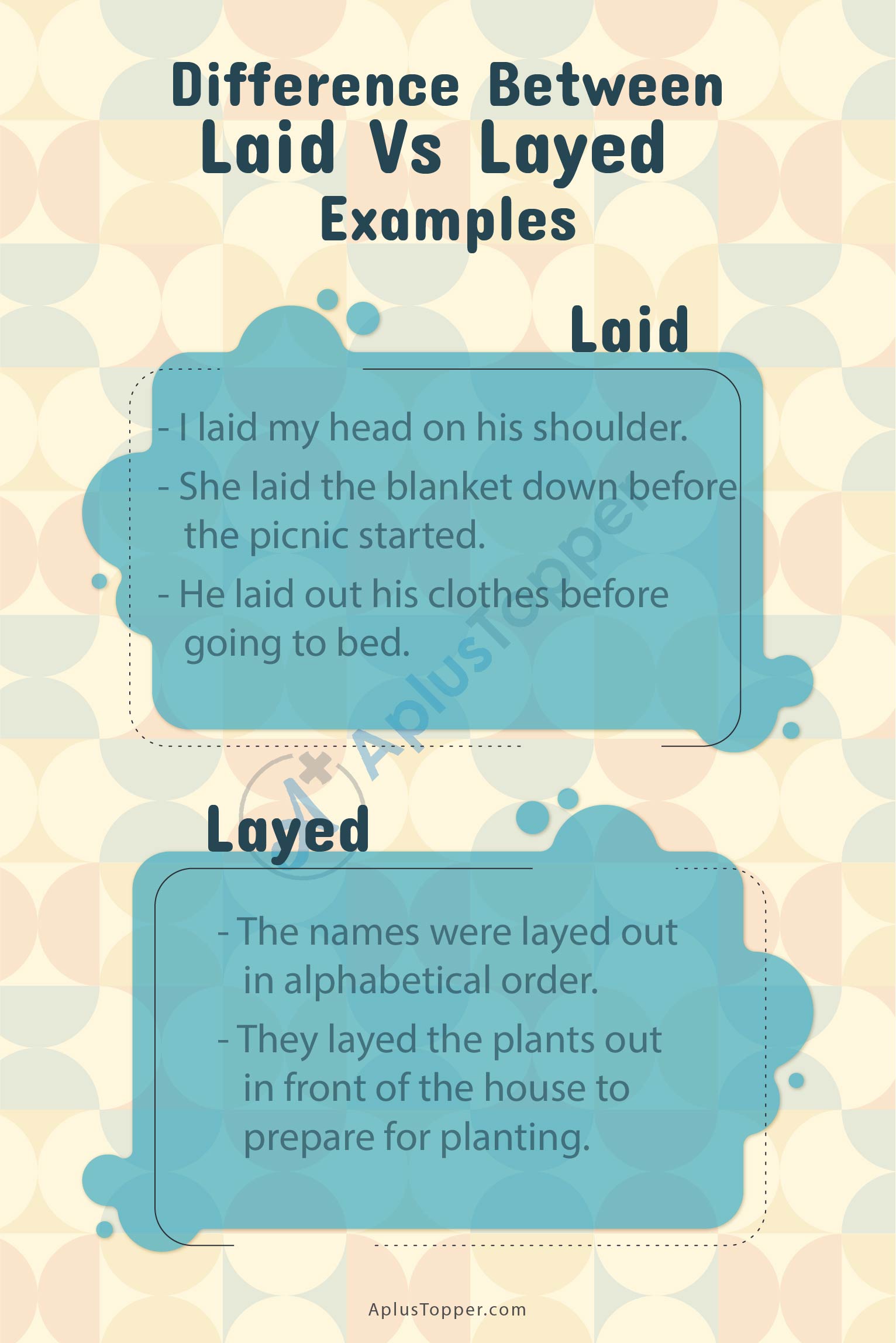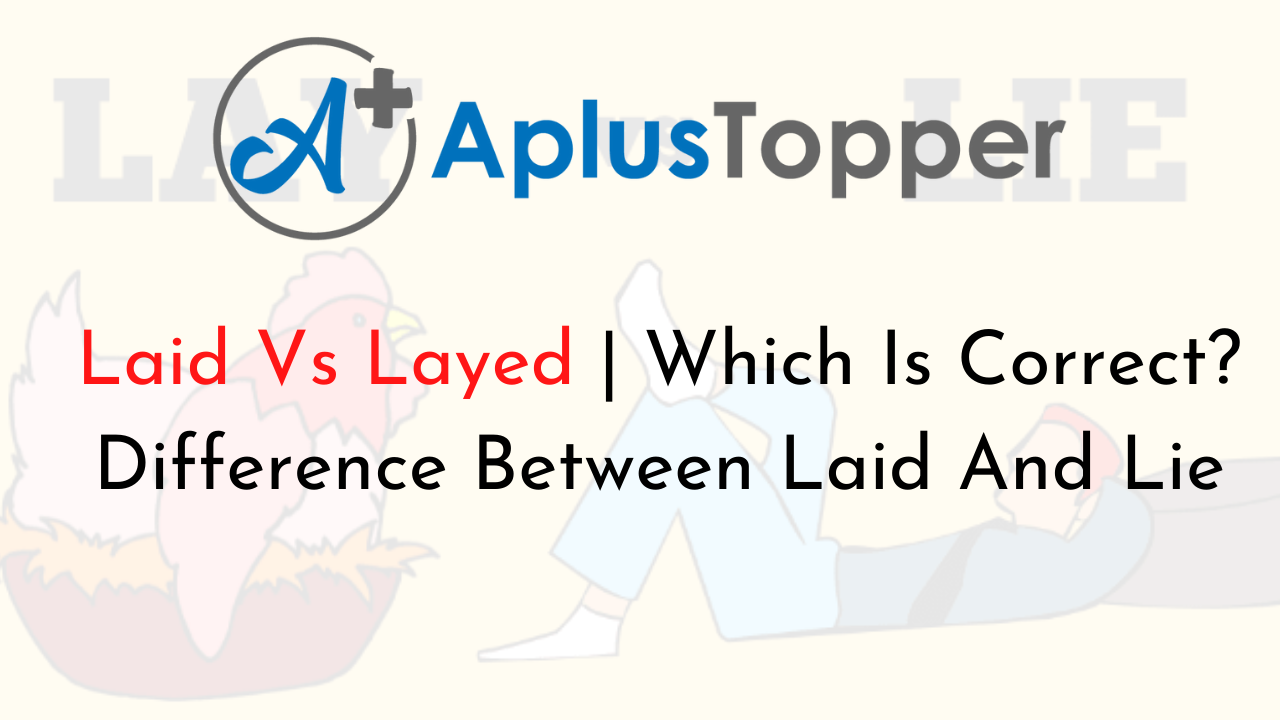Laid vs Layed: In spite of the fact that “layed” is a very famous variation spelling of the past tense of transitive “lay,” “laid” is the customary spelling in all specific situations. If your manager chooses to lay you off, you are laid off. The hen laid an egg. You set some hard boundaries.
The English language is so brimming with unessential words and rules, so phenomenally muddled and confounding. One of the numerous normal false impressions inside the language originates from the disarray among lay and untruth.
Lay is an action word that regularly signifies “to put or set down.” Lie is an action word that normally signifies “to be in or to accept a flat position”. At the end of the day, lay takes an immediate article, and falsehood doesn’t. Concerning the misinterpretations, all things considered, when you check out the two action words close to one another in various tenses, it turns into somewhat more clear where the disarray is.
Difference Between Laid and Layed
‘Laid’ and ‘layed’ can be often confounded, particularly for individuals who are new to the language, since one of them looks substantially more normal to use than the other. Nonetheless, the thing that matters is that while they once implied exactly the same thing, one is presently not utilized as a word.
‘Laid’ is the previous tense and past participle of the word ‘lay’. ‘Lay’ regularly intends to put something down, both allegorically and figuratively. It can intend to put something down on a surface.
“He laid the book on the table.”
It can intend to make or get ready something.
“The planners spread out the diagrams for the structure.”
This is particularly normal in the expression ‘lay an egg’, which means to create one. The word has likewise become related to wagers.
“She laid a bet on the primary pony went into the race.”
“I’ll lay chances that you don’t have the foggiest idea how to swim.”
For this situation, ‘lay chances’ is a shoptalk term for making a bet.
‘Layed’ is a more convoluted story. It is as of now not a legitimate word. It is considered antiquated. That is, it may in any case be utilized when somebody is attempting to make a bygone era feel, however, no one uses it outside of that.
More often than not in English, action words can be changed from current state to past tense by adding an – ed as far as possible. For instance, ‘walk’ becomes ‘strolled’. In any case, this is now and again not the situation when the action word closes in a Y. Normal action words are ones that have a standard formation: the previous tense and past participle end in – ed. Either the – ed is added as far as possible, similar to ‘converse with’ ‘talked’, or simply the – d is added when the action word as of now finishes in an E, similar to ‘smoke’ to ‘smoked’. Then, at that point, there are the unpredictable action words, which don’t follow that example.
A few action words that end in Y are not standard. The ones that have a consonant before the Y are quite often normal. For a large number of them, when you transform it into past tense, you transform the Y into an I and afterward add – ed as far as possible. For example, ‘attempt’ becomes ‘attempted’. There are a couple of exemptions, for example, ‘appreciate’ and ‘delighted in’, just as ‘stay’ and ‘remained’. Those previous tense structures are articulated uniquely in contrast to different action words finishing off with Y: ‘attempted’ has a long I sound in it, while ‘remained’ doesn’t.
In any case, when the letter before that is a vowel, as in ‘say’, then, at that point, there is no E added. ‘Say’ simply becomes ‘said’, ‘pay’ becomes ‘paid’, and ‘lay’ becomes ‘laid’.

Examples on How To Use Laid vs Layed
- She laid the child down tenderly on the bed.
- He laid the book on the shelf a second prior.
- She laid out the entirety of her new garments on the bed.
- Sarah shut the book and laid it to the side.
Lay and Lie
You lie, however you lay something down. Falsehood doesn’t need an immediate item. Lay requires an immediate item. A similar standard applies to laying and lying. The previous tense of lay is laid, yet be cautious with the past tense of a lie—there are two choices. We’ll jump into them later.
To lay is to set something in a resting position. The following are a couple of instances of lay in a sentence.
A lie is a misrepresentation or falsehood. Notwithstanding, it’s the action word type of untruth that individuals view as hard to recognize from lay. The action word lie means to tell a lie.
This mental aide should assist you with recollecting that lay, which starts with the letters L-A, has a long A sound like its definition: to put. Then again, lie, what begins with the letters L-I, has a long I sound like its definition: to lean back.

FAQ’s on Laid vs Layed
Question 1.
Is it layed down or laid down?
Answer:
The correct phrase is ‘laid down’.
Question 2.
Is it laid in bed or layed in bed?
Answer:
Lay is the regular verb. The past tense of lay is laid not layed. Thus, it is laid in bed.
Question 3.
What is the meaning of lay?
Answer:
To lay means getting something into a rest position. For example, hens lay eggs.
Question 4.
What is the meaning of lie?
Answer:
Lie is a word used untruth or falsehood. For example, he always lie about his salary.
